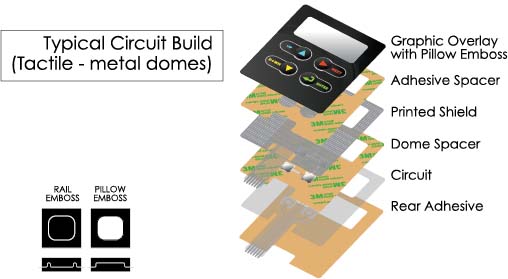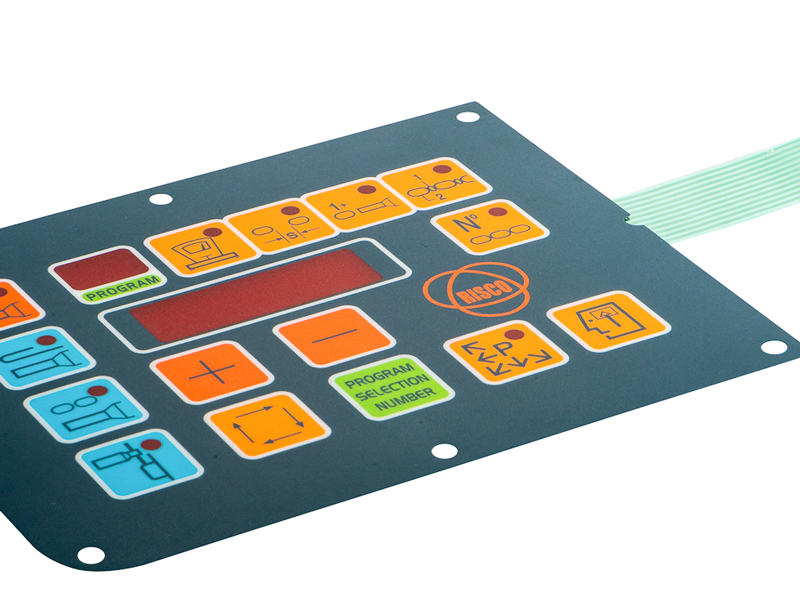Recognizing Membrane Layer Switches Over: The Key to Reputable and sturdy Controls
Membrane changes represent a vital element of modern interface design, mixing capability with strength in various applications. As we explore the ins and outs of membrane layer switches, it comes to be clear that their role in boosting control systems is both intricate and profound, raising inquiries about how best to take advantage of their capacities in future advancements.
What Are Membrane Layer Switches?
Membrane layer switches are an advanced remedy in the realm of interface technology, integrating performance and layout perfectly. These tools act as an interface in between users and digital systems, integrating several elements into a small style. Generally built from flexible, slim layers of materials, membrane layer buttons are designed to reply to touch, enabling users to communicate with machinery and electronic gadgets successfully.
The primary elements of a membrane button consist of a printed circuit layer, visuals overlay, and a spacer layer that avoids unexpected activation. The visuals overlay can be personalized to show brand name identification or user choices, enhancing looks while guaranteeing usability. Membrane buttons are commonly used in various applications, consisting of clinical gadgets, consumer electronic devices, and industrial equipment, owing to their toughness and resistance to environmental elements such as dampness and dust.
Among the key advantages of membrane buttons is their capability to hold up against wear and tear, making them optimal for high-traffic atmospheres. In addition, they are lightweight and need very little space, permitting innovative designs in product growth. In general, membrane layer changes represent a efficient and practical selection for modern-day electronic interfaces, marrying modern technology with user-centric style concepts.

Exactly How Membrane Changes Work
The procedure of membrane switches over rest on a straightforward yet efficient system that translates user input into digital signals. These buttons include numerous layers, generally consisting of a graphic overlay, a spacer layer, and a circuit layer. When an individual presses the button, the top layer flaws, enabling a conductive element in the circuit layer to reach a corresponding conductive pad on the bottom of the visuals overlay. This call shuts the circuit and sends a digital signal to the gadget, showing that the switch has actually been triggered.
The design of membrane buttons can vary, however they frequently integrate domes or responsive components to offer comments to the individual, boosting the total experience. The products utilized in membrane layer buttons, such as polyester or polycarbonate, add to their durability and resistance to ecological factors, consisting of wetness and dirt. The published circuits are typically encapsulated, which protects them from wear and tear over time.

Advantages of Membrane Layer Buttons
Among the main benefits of membrane switches is their flexibility in design, enabling them to be personalized to fulfill particular individual needs and aesthetic demands. This flexibility includes different sectors, where various shapes, sizes, and colors can be utilized to improve individual interaction and visual charm.
Furthermore, membrane layer buttons are understood for their durability. Built from durable products, they are immune to dirt, wetness, and physical wear, which substantially expands their life expectancy compared to traditional mechanical switches. This toughness makes them especially suitable for high-traffic environments and applications needing longevity.

Moreover, membrane buttons offer a streamlined account, resulting in a thinner style that can be incorporated into numerous tools without including mass. This function not just enhances the visual allure but also adds to a more ergonomic item style.

Applications of Membrane Layer Buttons
User-friendly and flexible, membrane check over here layer buttons locate applications throughout a large range of markets, consisting of medical gadgets, consumer electronics, and industrial devices. In the medical area, these switches are integral to tools such as diagnostic tools, person tracking systems, and mixture pumps, where reliability and simplicity of cleansing are essential. Their ability to withstand extreme environments and maintain right here performance makes them perfect for such applications.
In consumer electronics, membrane buttons are utilized in products like microwaves, cleaning makers, and remotes - membrane switch. Their smooth style enables user-friendly interface, boosting the overall user experience while offering sturdiness and resistance to put on and tear
Commercial equipment additionally profits from membrane switches, specifically in control panels for equipment and automation systems. These switches offer protection versus dust and dampness, ensuring constant efficiency in challenging atmospheres. Furthermore, their customizable attributes permit suppliers to customize them to particular operational demands, boosting effectiveness and capability.
Picking the Right Membrane Switch
When choosing a membrane button, it is important to take into consideration different aspects that affect efficiency and suitability for details applications. The key considerations consist of environmental conditions, tactile responses, durability, and design specifications.
First, examine the operating environment; buttons exposed to wetness, chemicals, or extreme temperatures require certain materials to guarantee longevity and functionality. Next, review the demand for tactile feedback. Depending on individual interaction, some applications might benefit from a responsive action to validate activation, while others may favor a non-tactile layout for visual reasons.
Longevity is an additional critical element; membrane switches ought to be designed to withstand constant use, impacts, and abrasion. Make sure the selected switch can endure the expected lifecycle, specifically in high-usage circumstances.
Verdict
To conclude, membrane changes act as vital components in the design of sturdy and trustworthy control systems across different markets. Their portable style, incorporated with robust construction and adjustable features, boosts individual interaction while making sure longevity popular environments. The adaptability of membrane layer changes permits tailored services that satisfy particular functional demands, strengthening their significance in contemporary innovation. membrane switch. As sectors continue to click this link progress, the relevance of integrating efficient membrane layer switch options can not be overstated.
Membrane changes represent a critical aspect of modern interface layout, mixing capability with strength in numerous applications.Membrane switches are an innovative remedy in the world of individual interface innovation, incorporating functionality and design flawlessly. Typically built from flexible, slim layers of materials, membrane switches are developed to respond to touch, allowing individuals to engage with equipment and electronic tools effectively.
The style of membrane buttons can differ, but they typically integrate domes or tactile components to provide comments to the individual, boosting the total experience.In conclusion, membrane layer changes offer as vital components in the design of long lasting and dependable control systems throughout various industries.